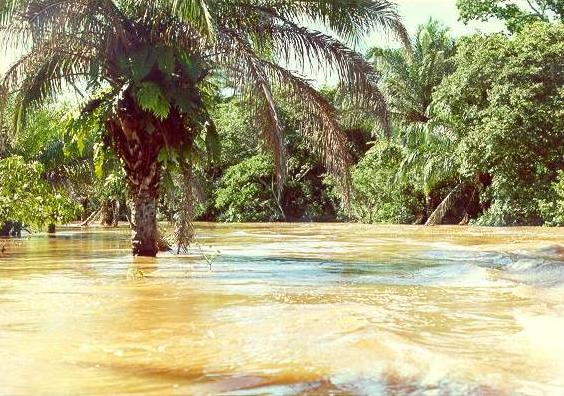CIV E 530 - OPEN-CHANNEL HYDRAULICS
FALL 2012
HOMEWORK No. 11
- You are observing the rise of a river during flood. The width of the river at the observation point, and for
some distance upstream is 65 m, and according to the gage reading,
the discharge is 70 m3/s.
Estimate the discharge at a point located 15.875 km upstream,
if the water surface is rising at the rate of 6 mm/hr at your location
and at 8 mm/hr at the upstream cross section.

- A hydraulically wide channel is operating at Froude number F = 0.22. The unit-width discharge is 2.8 m2/s. What are the two [absolute] Lagrange celerities?
- Using the Muskingum method, route a flood wave with the following hourly ordinates (25), starting at time = 0, to time = 24 hr.
100, 130, 150, 180, 220, 250, 300, 360, 450, 550, 700, 550, 490, 370, 330, 310, 280, 230, 170, 150, 130, 120, 110, 105, 100.
Assume Δt = 1 hr, K = 1 hr, X = 0.3. Report the peak outflow and time of occurrence. Use onlinerouting04.php
- Using the Muskingum-Cunge method, route the same flood wave as in Problem 3.
Assume:
Qp = 700 m3/s
Ap = 400 m2
Tp= 88 m
Δt = 1 hr.
Δx = 9.6 km
β = 1.65
So = 0.0007
Report the peak outflow and time of occurrence. Use onlinerouting05.php
Compare the results of Problems 3 and 4, and provide comments regarding the input to the two methods.